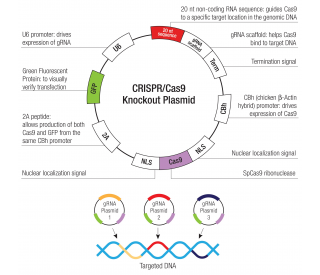Assay Type
Solid Phase Sandwich ELISA
Format
96-well strip plate
Range
156.00 - 10,000 pg/mL
Sufficient Materials
For five 96-well plates*
Specificity
Please see the
* Provided that the recommended microplates, buffers, diluents, substrates and solutions are used, and the assay is run as summarized in the Assay Procedure provided.
Ancillary Reagent Kit Available
DY008, DuoSet ELISA Ancillary Reagent Kit 2 -
This DuoSet ELISA Development kit contains the basic components required for the development of sandwich ELISAs to measure natural and recombinant human Aminoacylase. The suggested diluent is suitable for the analysis of most cell culture supernate, serum, and plasma samples. Diluents for complex matrices, such as serum and plasma, should be evaluated prior to use in this DuoSet.
Product Features
Optimized capture and detection antibody pairings with recommended concentrations save lengthy development time
Development protocols are provided to guide further assay optimization
Assay can be customized to your specific needs
Economical alternative to complete kits
Kit Content
Capture Antibody
Detection Antibody
Recombinant Standard
Streptavidin conjugated to horseradish-peroxidase (Streptavidin-HRP)
Other Reagents Required
DuoSet Ancillary Reagent Kit 2 (5 plates): (Catalog # ) containing 96 well microplates, plate sealers, substrate solution, stop solution, plate coating buffer (PBS), wash buffer, and Reagent Diluent Concentrate 2.
The components listed above may be purchased separately:
PBS: (Catalog # ), or 137 mM NaCl, 2.7 mM KCl, 8.1 mM Na2HPO4, 1.5 mM KH2PO4, pH 7.2 - 7.4, 0.2 µm filtered
Wash Buffer: (Catalog # ), or 0.05% Tween® 20 in PBS, pH 7.2-7.4
Block Buffer: (Catalog # ), or 1% BSA in PBS, pH 7.2-7.4, 0.2 µm filtered
Reagent Diluent: 0.1% BSA, 0.05% Tween 20 in Tris-buffered Saline (20 mM Trizma base, 150 mM NaCI) pH 7.2-7.4, 0.2 μm filtered
Substrate Solution: 1:1 mixture of Color Reagent A (H2O2) and Color Reagent B (Tetramethylbenzidine) (Catalog # )
Stop Solution: 2 N H2SO4 (Catalog # )
Microplates: R&D Systems (Catalog # )
Plate Sealers: ELISA Plate Sealers (Catalog # )
Preparation and Storage
Storage
Store the unopened product at 2 - 8 °C. Do not use past expiration date.
Background: Aminoacylase/ACY1
The ACY1 gene encodes aminoacylase, a member of the M20 family of metalloproteases. ACY1 plays a general role in the cytosolic breakdown of acetylated amino acids generated during protein degradation. It also interacts with sphingosine kinase type 1, which is involved in promoting cell growth and inhibiting apoptosis of tumor cells.
Entrez Gene IDs:
95 (Human); 109652 (Mouse);
Aliases:
ACY1; ACY-1; ACY1D; acylase; aminoacylase 1; Aminoacylase; aminoacylase-1; EC 3.5.1; EC 3.5.1.14; N-acyl-L-amino-acid amidohydrolase










